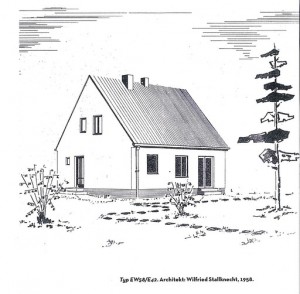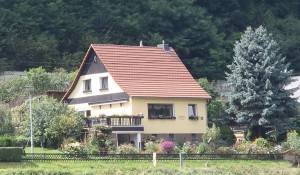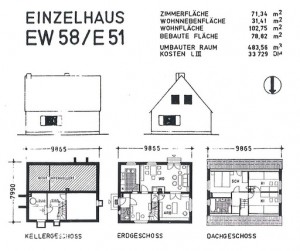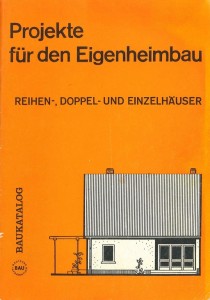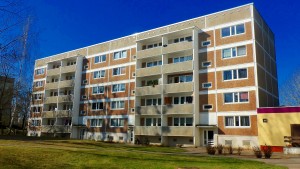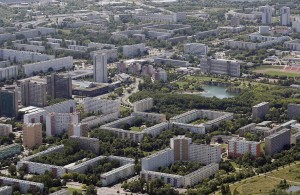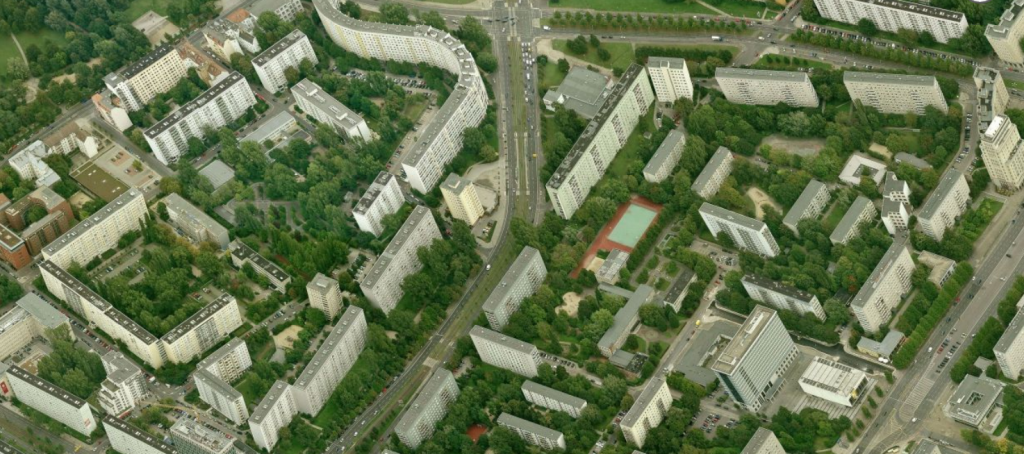
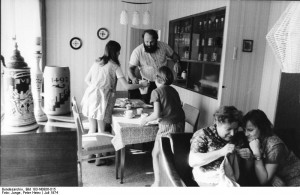
I recently learned that virtually nothing in English has been written on the man who was arguably the most important German architect since World War II. And so I wrote what is only the second English-language article (and only Wikipedia entry) on Wilfried Stallknecht*. By “important” I mean “had the greatest influence on buildings in Germany”. He didn’t redefine architecture as we know it or create a revolutionary visual language, and his buildings are neither beautiful nor dramatic, but he may have had the most influence on the largest number of buildings. The wide influence stems from two innovations dating from 1958: prefabricated apartment buildings that went on to house millions, and a single-family house design of which 500,000 were built.
Stallknecht and his team were the first to build apartment buildings using prefabricated panels. The method became ubiquitous in the housing projects of nearly every European city. The German term is the infamous Plattenbau (panel-building), which carries connotations like our “housing project” of dehumanized, bleak concrete expanses.
It’s hard for Americans to visualize these buildings since for us, “the projects” conjures up images of decrepit, crime-ridden housing in poor urban areas and failed urban renewal efforts. Germany has its share of this (though not as much as the US), but some Plattenbauten – not many, but some – are pleasant, liveable, well-designed places in spacious airy green settings. The photo at the top is smack in the middle of Berlin. It’s not a Normal Rockwell white-picket-fence scene but it’s not a communist horrorscape either.
The single-family house was a modest, affordable design called the EW58 that swept across the suburbs of East Germany. I would venture that most people in the former East know someone, if not many people, who live in an EW58. It’s sort of the Volkswagen Beetle, or Model T, of houses. I’m not sure but I think people there know the EW58 name itself too.
None of these works are “exciting” the way famous buildings usually are, but they are fascinating nonetheless. I’m interested in buildings that people actually live in, but when it comes to large housing projects, in the US one mainly hears about the failures and not the successes, however qualified they may be. Even among dedicated architecture fans the American mindset tends to picture, on the one hand, a small handful of pioneering early modernist landmarks such as the Bauhaus apartment blocks circa 1929 and Le Corbusier’s midcentury Unités d’habitation, and on the other hand, the disaster of St. Louis’ Pruitt-Igoe with its iconic 1972 demolition, and Paris’ current version of Pruitt-Igoe, the notorious and very much not demolished suburban cités. It’s a catchy story but leaves out the middle ground as lived by millions of Europeans of all classes.
The reason few people have ever heard of Stallknecht is that he worked with East German planning authorities and state-owned companies where the team was more important than the individual. To this day his name is rarely associated with the buildings by the general public even though the term Plattenbau is universal. It took twenty years after German reunification for the first exhibit about him (2009) and twenty-five for the first book (2014).
————————————————————————————————————–
*Until now, the only English-language information on Stallknecht was an article on the Smart Car website, strangely enough.
